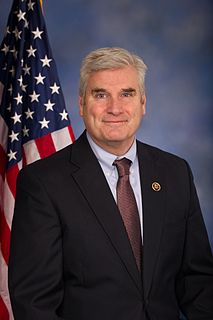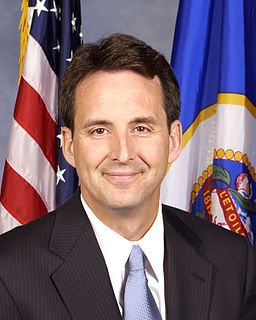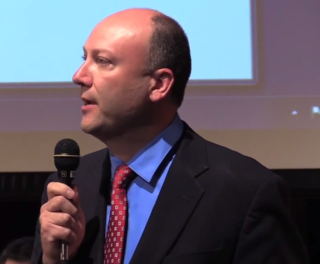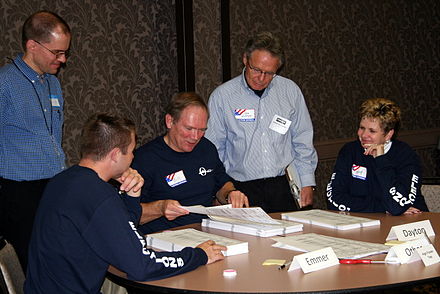
Arne Helge Carlson is an American politician who served as the 37th Governor of Minnesota.

Mark Brandt Dayton is an American politician who served as the 40th governor of Minnesota from 2011 to 2019. He was a United States Senator for Minnesota from 2001 to 2007, and the Minnesota State Auditor from 1991 to 1995. He is a member of the Minnesota Democratic–Farmer–Labor Party (DFL), which affiliates with the national Democratic Party.
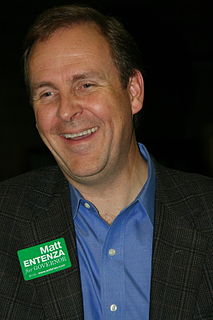
Matthew "Matt" Keating Entenza is a Minnesota lawyer and former politician who served six terms in the Minnesota House of Representatives. He served as House Minority Leader from 2003 to 2006. After leaving the legislature, he was an unsuccessful candidate for various statewide offices, including governor, attorney general, and most recently state auditor.
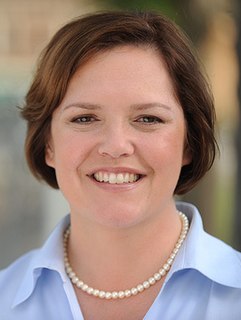
Margaret Anderson Kelliher is an American politician, current Commissioner of the Minnesota Department of Transportation, and a former member of the Minnesota House of Representatives. A member of the Minnesota Democratic–Farmer–Labor Party, she represented District 60A, which includes portions of the city of Minneapolis in Hennepin County, located in the Twin Cities metropolitan area. First elected in 1999, she served until 2011, also serving as the Speaker from 2007 to 2011. She is the second woman to hold the position of House speaker. She was an unsuccessful candidate for the DFL nomination for Governor of Minnesota in the 2010 gubernatorial election, losing to former Senator Mark Dayton. On June 5, 2018, she registered as a candidate for the DFL nomination to the U.S. House of Representatives in Minnesota's 5th congressional district, going on to lose in the primary.

The 2008 United States Senate election in Minnesota took place on November 4, 2008. After a legal battle lasting over eight months, the Democratic–Farmer–Labor Party (DFL) candidate, Al Franken, defeated Republican incumbent Norm Coleman in one of the closest elections in the history of the Senate. Franken took his oath of office on July 7, 2009, more than half a year after the end of Coleman's term on January 3, 2009.
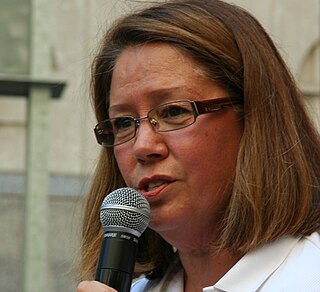
Yvonne Prettner Solon is an American politician who served as the 47th lieutenant governor of Minnesota, from 2011 to 2015. She is the sixth consecutive woman to serve in that capacity and is a member of the Democratic-Farmer-Labor Party. She served with Governor Mark Dayton, who successfully ran for reelection, while she chose to retire at the end of her term.

The Independence Party of Minnesota, formerly the Reform Party of Minnesota, is a political party in the U.S. state of Minnesota. It was the party of former Minnesota Governor Jesse Ventura (1999–2003).
Tom Horner is a Minnesota politician and a member of the Independence Party of Minnesota. He was a candidate in the 2010 election for Governor of Minnesota.

Elections were held in Minnesota on Tuesday, November 2, 2010. Primary elections took place on August 10, 2010.

The 2014 Minnesota gubernatorial election took place on November 4, 2014, to elect the governor of Minnesota concurrently with the election to Minnesota's Class II U.S. Senate seat, as well as other elections to the United States Senate in other states and elections to the United States House of Representatives and various state and local elections.

The 2014 United States House of Representatives elections in Minnesota took place in the U.S. state of Minnesota on November 4, 2014, to elect Minnesota's eight representatives in the United States House of Representatives for two-year terms, one from each of Minnesota's eight congressional districts. Primary elections were held on August 12, 2014.

A general election was held in the U.S. state of Minnesota on November 4, 2014. All of Minnesota's executive officers were up for election as well as all the seats in the Minnesota House of Representatives, several state judicial seats, a United States Senate seat, all of Minnesota's eight seats in the United States House of Representatives, and several seats for local offices. A primary election was held on August 12, 2014, to nominate major political party candidates for partisan offices and candidates for nonpartisan offices.
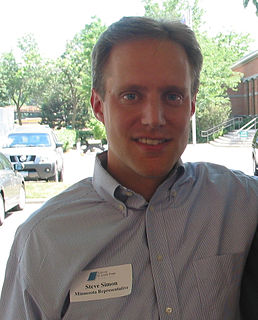
The 2014 Minnesota Secretary of State election was held on November 4, 2014, to elect the Minnesota Secretary of State.
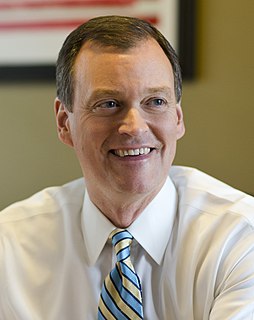
The 2018 Minnesota gubernatorial election took place on November 6, to elect the 41st Governor of Minnesota as incumbent governor Mark Dayton chose not to run for re-election for a third term. The Democratic nominee was congressman Tim Walz from Minnesota's 1st congressional district while the Republicans nominated Hennepin County commissioner Jeff Johnson. The Independence Party of Minnesota didn't field a candidate for the first time since 1994. Going into the election the polls showed Walz ahead and the race was characterized as lean or likely DFL.

The 2018 United States House of Representatives elections in Minnesota were held on November 6, 2018, to elect the eight U.S. Representatives from the state of Minnesota, one from each of the state's eight congressional districts. The elections coincided with an open gubernatorial election, a U.S. Senate election, a special U.S. Senate election, State House elections, and other elections.

A general election was held in the U.S. state of Minnesota on November 6, 2018. All of Minnesota's executive officers were up for election as well as all the seats in the Minnesota House of Representatives, several judicial seats, a United States Senate seat, Minnesota's eight seats in the United States House of Representatives, and several seats for local offices. Special elections were also be held for a Minnesota Senate seat and Minnesota's Class 2 U.S. Senate seat. A primary election to nominate Republican and Democratic–Farmer–Labor (DFL) candidates and several judicial and local primary elections were held on August 14, 2018.

The 2018 Minnesota State Auditor election was held on November 6, 2018, to elect the state auditor of the U.S. state of Minnesota. Julie Blaha, the Minnesota Democratic–Farmer–Labor Party (DFL) nominee, won the election.


